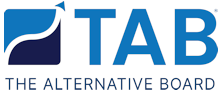
A friend of mine is the General Manager of a pretty good-sized construction company. As such, he is by default the head of HR for the entire team of around 200 employees. During a recent phone conversation, I noticed my friend was clearly irked. I asked him what was wrong.
“I am one man down and now I have to scramble,” he replied.
Turns out, a foreman who had been overseeing a very big, rather complex job site had just quit, giving only a 24-hour notice.
“The guy let me know last week that he would be leaving in six months. I told him we would miss him and sincerely thanked him for the heads-up, as it was going to take some time to find a suitable replacement. Today he walked in my office and said Kansas was calling and he just couldn’t wait. Six months turned out to be one day,” he said.
“Well get used to it,” I responded. “You will be lucky if you are ever given a two-week notice again.”
“Seriously?”
“Seriously.”
My friend may not have loved my response, but it is true.
THE CHANGE IN EMPLOYMENT DYNAMICS: NO MORE GOLD WATCHES
The fact is, sweeping changes to employment fluidity and commitment have been brewing since way before the pandemic and the Work from Home COVID model took root. To see its origins, you must go all the way back to Y2K when the tech savvy Millennials began entering the labor force.
Due to such formidable skills, along with the onset of Boomers retiring from the labor force, Millennials had extraordinary clout regarding exactly how the new labor dynamics would play out.
They wanted more flexibility. They got it. They wanted more work from home options. They got it. They didn’t want to commit long term. And they didn’t. So by the time the pandemic rolled around, this new self-serving employment dynamic had been taking shape for nearly two decades.
Some call it a “Me Centric” career approach, but I would argue that every career is a constant balancing act of how much you can be compensated for being good at what you do. The more in demand your skills, they more cards you hold. It really is as simple as supply and demand.
SO WAS IT OKAY FOR THAT GUY TO LEAVE?
The construction industry continues to boom and never really even slowed during the pandemic. So the construction talent pool has exceptional leverage and movement options. That foreman surely knew he could have pick of the litter when it came to securing a position in his new location.
Make no mistake, it is no longer just the Millennials anymore that are in demand and making plans. Generation Z (Zoomers!) are arguably the best educated, most ambitious – dare I say most talented – generation to ever come down the pike. Their contributions to the labor force will be formidable, so plan on even more cultivated employment dynamics as that group continues their influx into the market.
WHAT IS A BUSINESS OWNER OR HR PERSON TO DO?
Like so many other aspects of post-pandemic business, it is imperative that employers pivot their employee acquisition and retention to the new normal (is anyone else getting tired of that term?) Gone are the days of reactive hiring. Giving two weeks is simply a thing of the past. And company loyalty just doesn’t exist like it used to.
My suggestion to my friend – and to you – is to always be hiring. Let me repeat that. Always be hiring. Not unlike tending to your sales pipe, you should always be scouting for new employee prospects. Think about it, what really costs your business more – bringing on an employee early or not having one when you need them? Sure, not every business has the luxury of being able to hire before their actual need; the key for those businesses then lies in anticipating its staffing needs and being fast on its HR feet.
Another option, which is a surprisingly hard sell for some business owners, is to outsource their screening and hiring to an HR service. I have almost universally seen very positive outcomes from the approach, particularly for those with high employee turnover rates or expansive employment needs. There are a substantial variety of recruitment models and price points; regardless, the investment is almost always positively offset by the enhanced hiring efficiencies.
So, yes, here we are facing another new normal. It is an employees’ market while industry is left longing for the labor norms of yesteryear. But unlike the employees themselves, this current employment dynamic isn’t going anywhere.
Blair Koch is the CEO of TAB Denver West, a TAB CEO Advisory Board Facilitator, and a Business Ownership Lifecycle Coach. Blair has spent most of her career helping small business owners achieve their personal and professional goals. She also hosts the Best Businesses in Denver podcast.










